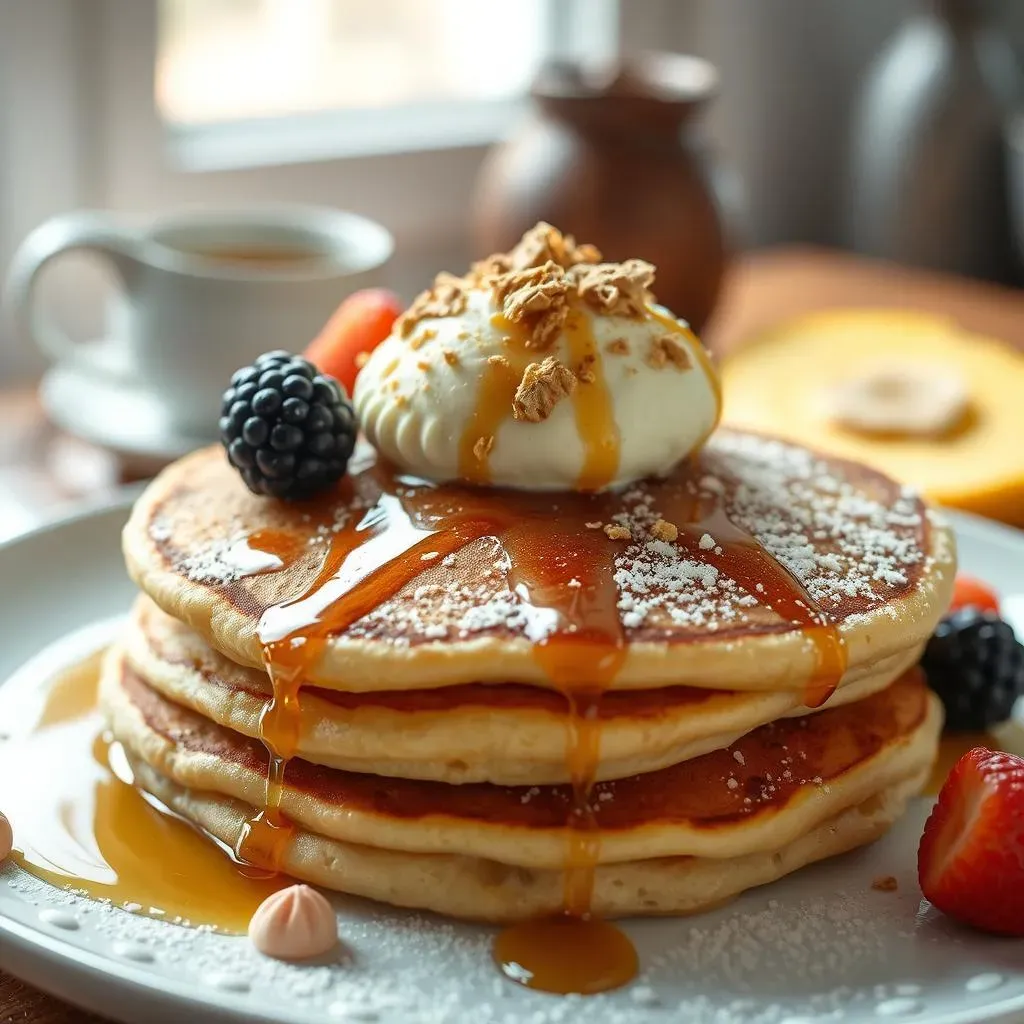Table of Contents
Tired of the same old breakfast routine? Craving something that's both delicious and good for you? You're not alone! Many of us want a breakfast that satisfies our taste buds and our nutritional needs, especially when navigating dietary restrictions like gluten intolerance. That's where the magic of a gluten-free pancake recipe with protein powder comes in. Imagine fluffy, golden pancakes that not only taste amazing but also pack a protein punch to keep you feeling full and energized. This article is your guide to creating these breakfast wonders. We'll explore why adding protein to your pancakes is a game-changer, how to pick the best protein powder for your needs, and, of course, we’ll walk through the steps of making the perfect gluten-free protein pancakes. We’ll also tackle common challenges and share tips to ensure your pancake flipping is a success. So, get ready to transform your mornings with a breakfast that's both indulgent and good for you! These aren't just any pancakes; they're a delicious, healthy way to start the day.
Why Add Protein to Your Pancakes?
Why Add Protein to Your Pancakes?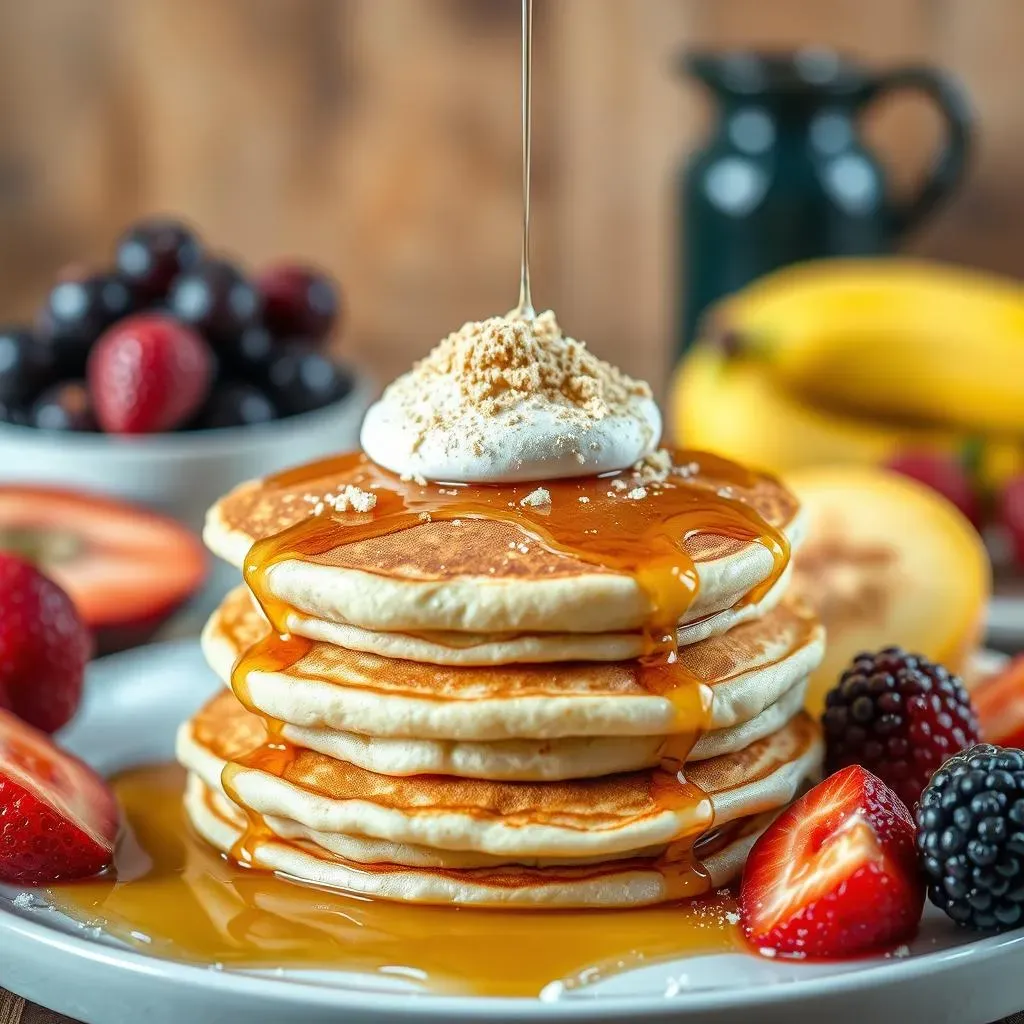
The Power of Protein
Okay, let's get real. Regular pancakes, while delicious, can leave you feeling hungry again, like, an hour later. They are often packed with carbs that give you a quick energy boost, followed by a crash. That’s where protein swoops in to save the day. Adding protein to your gluten-free pancake recipe transforms them from a simple treat into a powerhouse breakfast. Protein helps you feel fuller for longer, which means you're less likely to reach for those mid-morning snacks. It's like having a secret weapon against the dreaded hunger pangs. Plus, protein is essential for building and repairing tissues, so it’s not just about feeling full; it's about fueling your body right.
Beyond Fullness: The Benefits
It's not just about keeping your tummy happy, it is about the overall health perks. Protein plays a crucial role in a ton of bodily functions, from building muscle to supporting your immune system. By adding protein powder to your pancakes, you're giving your body a boost of the good stuff. This is especially important if you're active or looking to increase your protein intake. Think of it as a smart shortcut to a more balanced diet. And hey, who wouldn't want to enjoy a stack of delicious pancakes while also getting a dose of essential nutrients? It's a win-win! For those needing a quick meal option, check out this quick breakfast pancake recipe.
Here is a quick list of why you should add protein to your pancakes:
- Keeps you full longer.
- Helps build muscle.
- Supports your immune system.
- Provides a balanced breakfast.
Choosing the Right Protein Powder
Choosing the Right Protein Powder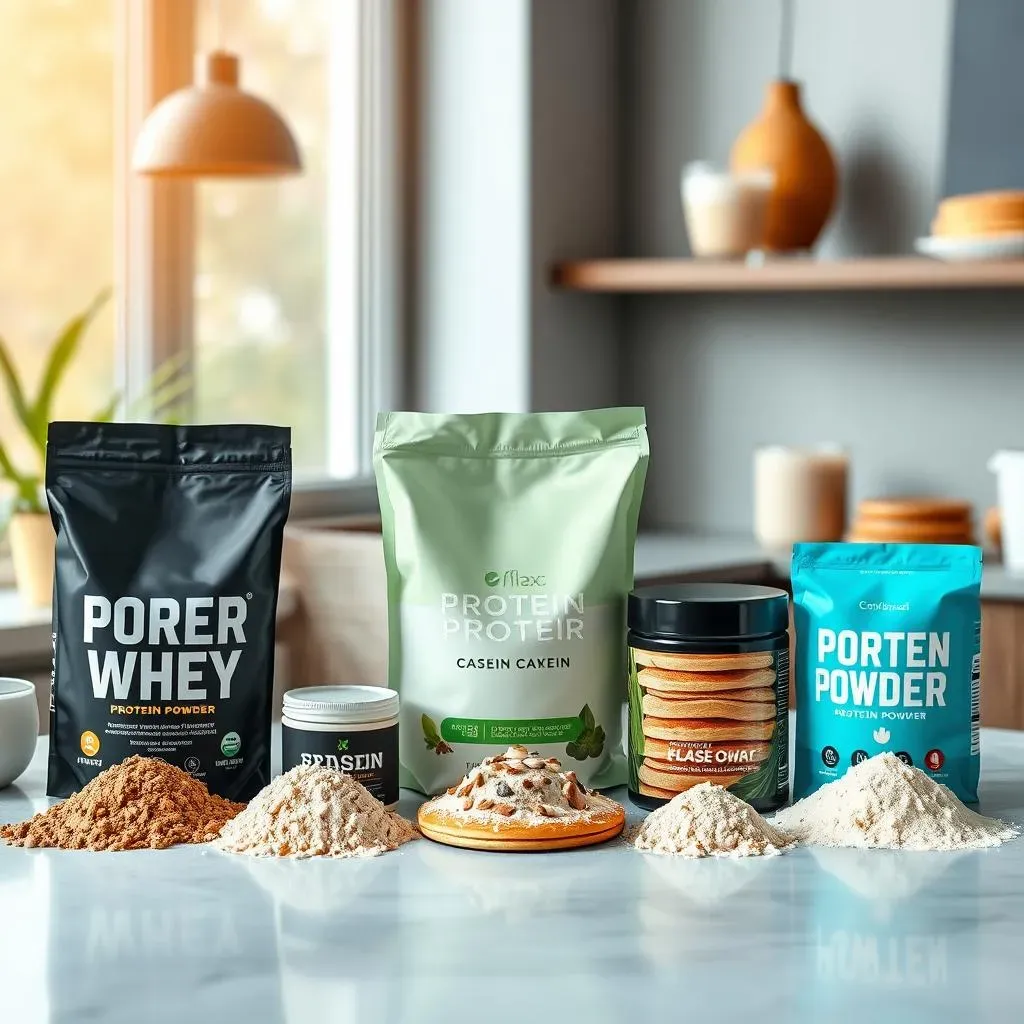
Protein Powder Types
Okay, so you're ready to boost your pancakes, but the protein powder aisle? It's a jungle! There are so many options, it can make your head spin. First things first, you've got your whey protein, which is like the classic choice. It's a complete protein, meaning it has all nine essential amino acids, and it's absorbed by the body pretty quickly. Then there's casein protein, which is slower to digest, making it a good option for sustained release. For those avoiding dairy, you can also find plant-based protein powders, like soy, pea, or rice protein. Each one has its own unique flavor and texture, so it might take a bit of experimenting to find your favorite.
Don't just grab the first tub you see. Think about what you want from your protein powder, is it for muscle recovery, or a quick protein boost for breakfast? Also, consider your dietary needs, are you needing a dairy-free pancake option? It's kind of like picking the right shoes for a marathon, you wouldn't wear flip-flops, right? So, choose your protein powder wisely.
Flavor and Additives
Now, let's talk about flavor, because no one wants a pancake that tastes like chalk. Some protein powders are flavored, like vanilla or chocolate, which can be a great way to add extra flavor to your pancakes without adding extra sugar. But, be careful! Some flavored powders can be packed with artificial sweeteners and additives. Reading the label is essential, look for powders with minimal ingredients and natural sweeteners, if you can. Also, consider unflavored protein powder, it is a blank canvas that you can use to add your own flavors. You might find that unflavored options give you more control over the final taste of your pancakes.
Think of it like this: you are the chef and the protein powder is one of your ingredients, so choosing wisely can make a big difference. Don't be afraid to try a few different types and brands until you find one that you actually enjoy. If you are unsure what to use, try a pancake recipe comparison to see what others are using.
Protein Powder Type | Digestion Speed | Good For | Considerations |
|---|---|---|---|
Whey | Fast | Quick protein boost | Dairy-based |
Casein | Slow | Sustained release | Dairy-based |
Plant-Based (Soy, Pea, Rice) | Variable | Dairy-free option | May have unique flavor |
Making the Perfect GlutenFree Protein Pancakes
Making the Perfect GlutenFree Protein Pancakes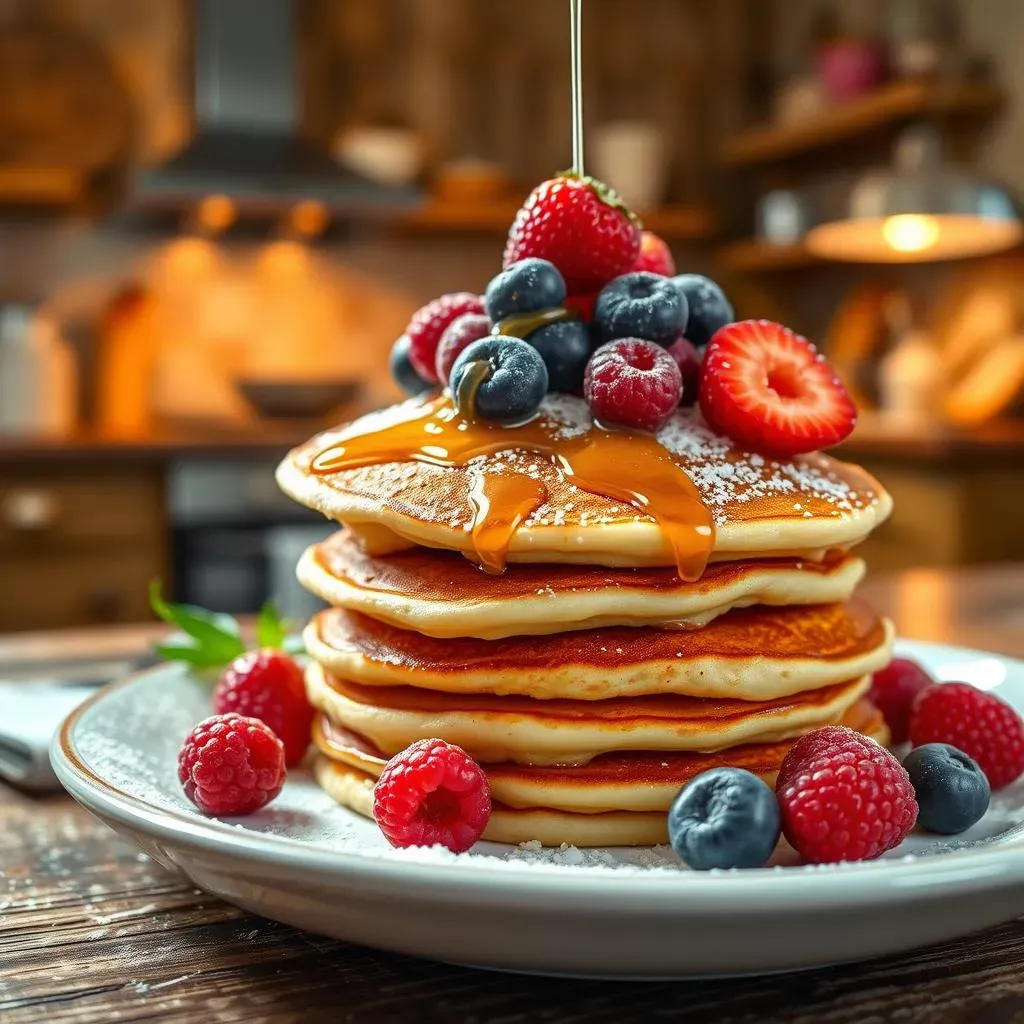
The Base Recipe
Alright, let's get down to business. Making the perfect gluten-free protein pancakes is easier than you might think. Start with a good base recipe. This usually involves a mix of gluten-free flour – think almond flour, oat flour, or a blend – along with baking powder for that lovely rise, a pinch of salt to enhance the flavors, and your liquid of choice. Eggs are usually a key player, but if you are looking for an egg-free option, you can use a flax egg or chia seed mix. The liquid can be anything from almond milk to regular milk or even water. The key is to get the batter to the right consistency – not too thick, not too thin, but just right. It should be pourable but not runny.
Now, for the protein powder, you'll want to add it in at the same time as the dry ingredients. This ensures it's evenly distributed throughout the batter. Remember, the type of protein powder you use can affect the consistency, so you might need to adjust the liquid slightly. If you are new to this, you can check out this easy gluten-free pancake recipe.
Mixing and Cooking
When it comes to mixing, don't overdo it! Overmixing can lead to tough pancakes, and nobody wants that. Gently combine the wet and dry ingredients until just mixed. A few lumps are okay. Now, heat your griddle or pan over medium heat. Add a little butter or oil to prevent sticking. Once the pan is hot, pour your batter onto the pan, forming your pancakes. Cook for a couple of minutes per side, or until golden brown and cooked through. Flip them carefully, like you are a professional chef, and try not to make a mess.
The best part? You can get creative with your toppings. Fresh fruit, a drizzle of honey, a dollop of yogurt – the possibilities are endless! It is like you are creating a masterpiece on a plate, so why not make it fun and delicious? If you want to try a different flavor profile, try using a gluten free banana pancake recipe.
Here's a quick guide:
- Mix dry ingredients first.
- Add wet ingredients, mix gently.
- Don't overmix the batter.
- Cook on medium heat.
- Flip when golden brown.
Tips, Tricks and Troubleshooting
Tips, Tricks and Troubleshooting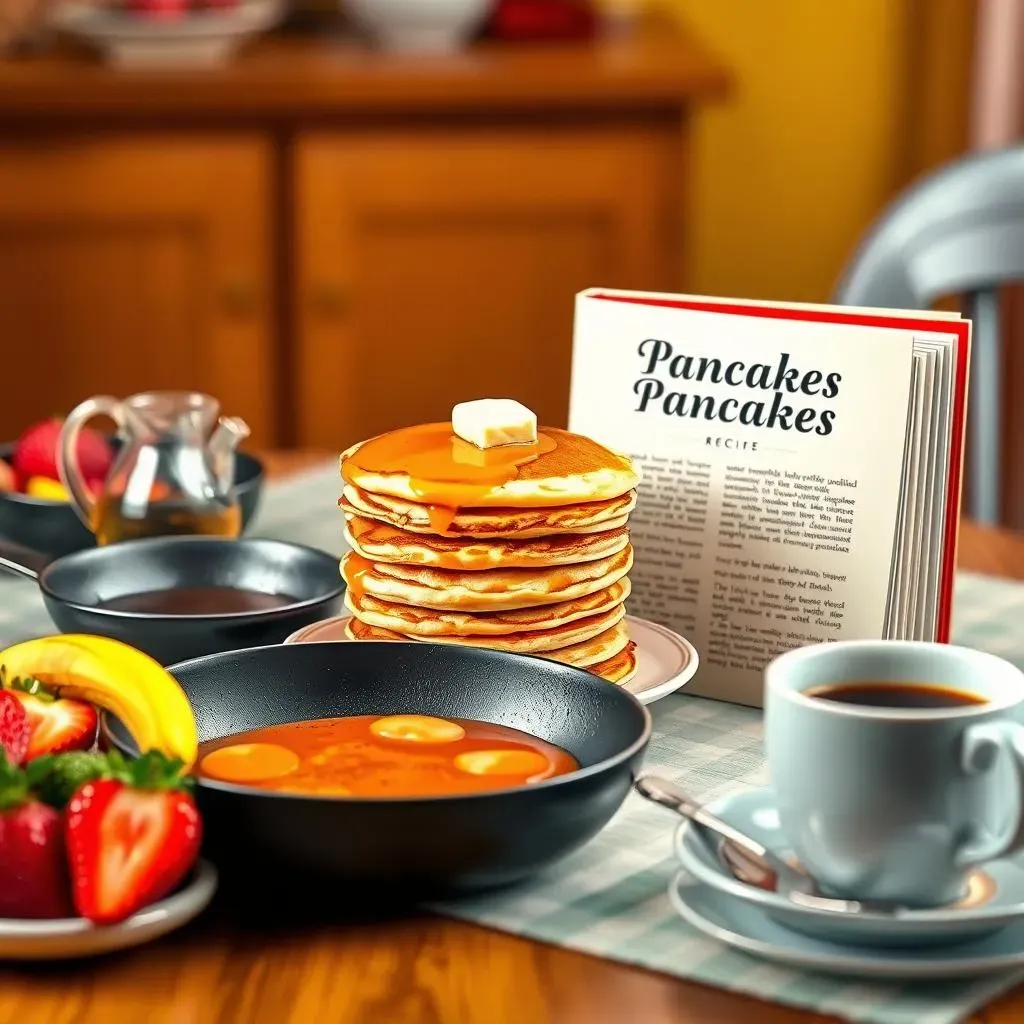
Okay, so you've got the basic recipe down, but what happens when things go a little sideways? Don't worry, we've all been there! One of the most common issues is pancakes that are too dense or too dry. This usually happens when the batter is too thick. Adding a little more liquid, a tablespoon at a time, can help you achieve that perfect pourable consistency. Another issue? Pancakes that stick to the pan. Make sure your pan is properly heated and use enough butter or oil. Also, resist the urge to flip them too early. Let them cook until the edges start to set and bubbles form on the surface. If you're having trouble with your pancakes not rising, double-check that your baking powder is fresh. Old baking powder can lose its oomph. If you want to make sure you get the perfect rise, try a fluffy pancake recipe with almond flour for a great base.
Sometimes, even with the best intentions, your pancakes might not turn out exactly as planned. Maybe they're a little too eggy, or maybe the protein powder gives them a weird aftertaste. The beauty of cooking is that it's all about experimenting! If you find your pancakes are too eggy, try using just egg whites or a flax egg as a substitute. If your protein powder is giving you trouble, try a different brand or flavor. Also, don't be afraid to adjust the amount of protein powder you're using. Sometimes, less is more. Remember, practice makes perfect, and even the most seasoned cooks have their pancake fails. If you are still unsure, try this troubleshooting pancake guide.
Problem | Solution |
|---|---|
Dense or dry pancakes | Add more liquid (1 tbsp at a time) |
Sticking to the pan | Ensure pan is hot, use enough butter/oil |
Not rising | Use fresh baking powder |
Too eggy | Use egg whites or a flax egg |
Weird protein powder taste | Try different brand or flavor, adjust amount |
Another great tip is to use a blender for a super smooth batter. If you have a blender, throw all your ingredients in there and blend until it's nice and smooth. This can help eliminate any lumps and make your pancakes extra fluffy. For a quick and easy option, check out this pancake recipe made with a blender. Also, remember that the type of flour you use can make a difference. Some flours, like coconut flour, tend to absorb more liquid, so you might need to adjust your recipe accordingly. If you are looking for a different type of flour, try this coconut flour recipe.
Finally, let's talk about storage. If you are making a big batch of pancakes and you won't eat them all at once, you can store them in the fridge for up to three days. To reheat them, you can use a microwave or a pan. You can also freeze them for longer storage. Just place them in a freezer bag or container and they'll be ready to go whenever you need a quick breakfast. Remember, the goal is to have fun and enjoy the process of making and eating delicious pancakes! So, don't be afraid to experiment, make mistakes, and learn along the way. Happy flipping!
- Use a blender for smooth batter.
- Adjust liquid for different flours.
- Store in fridge for up to three days.
- Freeze for longer storage.
Wrapping Up Your Gluten-Free Protein Pancake Journey
So, there you have it, a complete guide to making your own fantastic gluten-free protein pancakes. From understanding the benefits of added protein to mastering the cooking process, you're now equipped to create a breakfast that’s both delicious and nutritious. Remember, the key is to experiment and find what works best for you. Don't be afraid to try different protein powders, flours, and toppings to make these pancakes your own. Whether you're looking for a quick weekday breakfast or a leisurely weekend brunch, these pancakes are a versatile and satisfying option. Embrace the joy of cooking, and enjoy every fluffy, protein-packed bite. And hey, if you have any pancake triumphs (or disasters!), don't hesitate to share them – we're all in this together! Go forth and flip!
